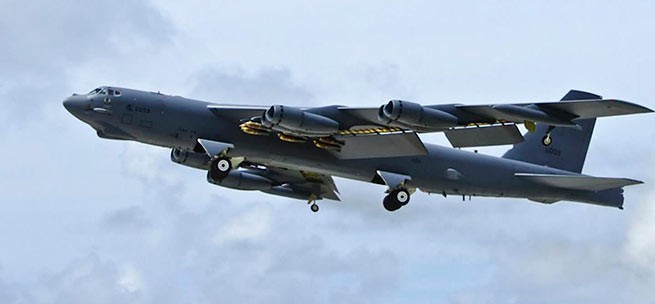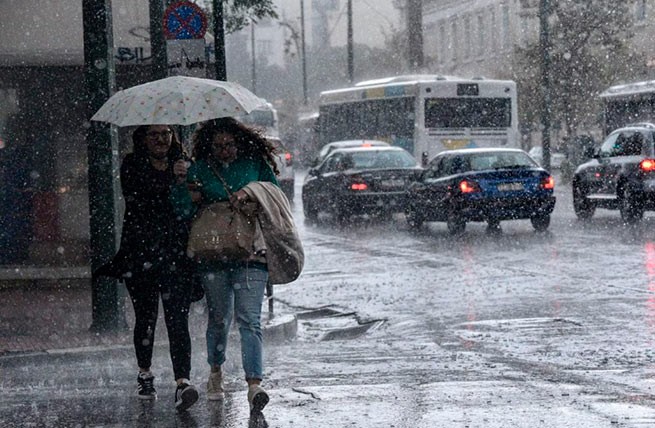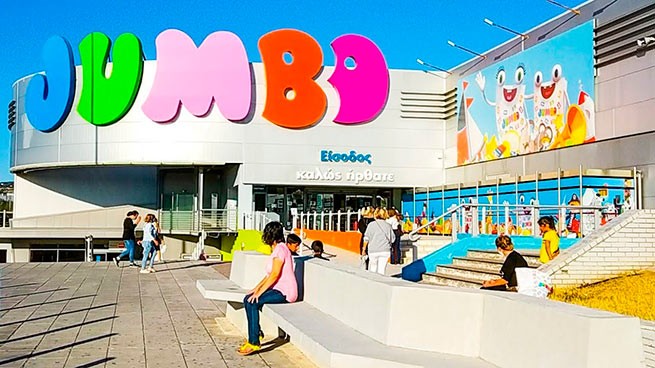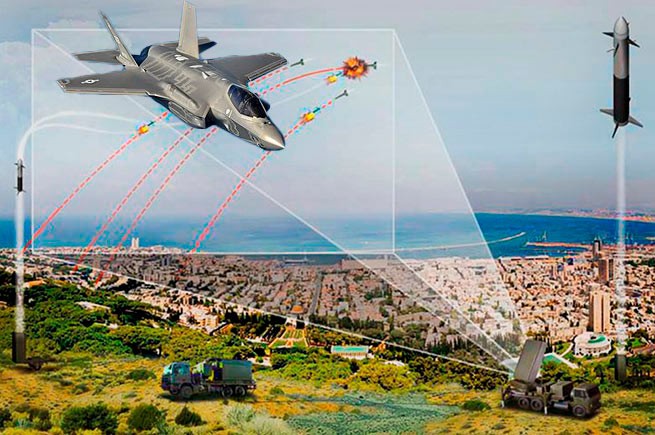This year marks 102 years since the genocide of Pontic Hellenism. May 19 is a day that has been officially recognized by the Greek state since 1994 and is named the Day of Remembrance of the Pontus Greek Genocide.
More than 300,000 deaths are officially reported, while the Central Council of the Pontians (Κεντρικό Συμβούλιο Ποντίων) in the Black Book (Μαύρη Βίβλο) mentions 353,000 victims of genocide.
The genocide of the Pontic Greeks is the massacre and deportation of the Greek population in the Pontus region, committed by the Young Turks between 1914 and 1923. The survivors of the unprecedented massacre fled to Ano Pontos (in the USSR), and after the Asia Minor disaster in 1922 – to Greece. International literature and state archives of many countries contain numerous testimonies of the genocide committed against the Pontic inhabitants of the Ottoman Empire. It took place in parallel with the genocide against other peoples, Armenians and Assyrians, as a result of which some researchers consider separate persecutions as part of a single policy of genocide against Greeks or Christians of Asia Minor as a whole.
Historical reference
After the fall of Constantinople in 1204, under the invasion of the crusaders on the lands of Byzantium, in addition to the principalities of the crusaders and the territories of the Italian republics, three main Byzantine formations were formed: the Nicene Empire, the Epirus despotate and the Trebizond Empire. The life and agony of the Byzantine world continued for another two and a half centuries, until the surrender of Constantinople in 1453 to the Turks.
Surrounded by the Muslim world, the Trebizond Empire survived the fall of Constantinople for only 8 years. Since Trebizond surrendered without a fight, the scale of destruction here was less. However, the population declined sharply. Part of the nobility was resettled by the Turks to Constantinople and settled in the Phanar quarter. 1,500 young Pontians were taken to the Janissaries. The population of Trebizond was reduced to 3 thousand people.
The Greek population of Pontus, numbering at the beginning of the 15th century to 250 thousand people, decreased and, with all the partial improvement of the situation, by 1520 it numbered 180 thousand people.
The population of Pontus retained its identity, language and, for the most part, the Orthodox faith. Crypto-Christianity was widespread among those who converted to Islam. In 1856, taking advantage of the Ottoman reforms, 5,000 Pontians returned to Orthodoxy. In 1916, when the Russian army occupied Trebizond, in the houses of wealthy Turks, Russian officers found them in the basements of the chapel and, shouting “Orthodox”, kissed the owners, knelt in front of the icons.
Information about the liberation struggle of the Pontians in the centuries following the fall of the Trebizond Empire is sketchy. There is no reliable information about any performances in this remote Greek-speaking region against the backdrop of numerous uprisings in mainland Greece.
The Greek Revolution (1821-1829), which led to the restoration of Greek statehood, was marked by the participation in it of persons of Pontic origin, primarily members of the Ypsilanti family, but these events did not directly affect the territory of Pontus. At the same time, geographically isolated from the world of mainland Greece, the archipelago and the west of Asia Minor, the Greeks of Pontus retained the archaic form of the Greek language to such an extent that Jacob Fallmerayer, who in his theory “accused” the modern inhabitants of mainland Greece of Slavic origin, considered the Pontians to be continuous successors Greek kind.
The migration flows of the Orthodox Greek population from the Ottoman-occupied territory of Pontus were predetermined by the proximity to the co-religionists Georgia and the Russian Empire.
Since the 16th century, the Ottomans have granted autonomy to the Gumushhane region of the Diocese of Chaldia, 115 km south of Trebizond. The reason was the metallurgical activity of the Pontic population, primarily the production of silver and the minting of coins.
The migration of Pontic metallurgists to neighboring Georgia has been noted since the middle of the 18th century. In the period from 1801 to 1856, up to 100 thousand Pontians crossed the Russian border and settled in Georgia. In general, the Pontic diaspora on the territory of the Russian Empire, on the eve of the First World War, represented 50% of the Greek population of Pontus.
In 1878, when Russian troops occupied Kars, at the call of the authorities, 75 thousand Pontians moved to the new Kars region. By the beginning of the First World War, 73.4 thousand Armenians, 32.5 thousand Greeks, 22.3 thousand Russians and 147 thousand Muslims lived there, of which 63.5 thousand were Turks, the rest were Kurds, Karapapakhs and Tatars.
First stage
Vlasis Agdzidis, a modern historian of Pontic descent, writes that the First World War provided Turkish nationalism with the necessary political framework to carry out a plan to exterminate the Christian population of the empire. The persecution began in Eastern Thrace, with the forced deportation of the Greek population. Persecutions against the Greeks of Ionia followed, culminating in the genocide of the population of Pontus. The victims of ethnic cleansing were the indigenous Christian population, except for the Levantines and a few Christian Turks.
According to Agdzidis, Christians-Monophisites (Armenians, Assyrians), Orthodox (Greeks of Pontus, Ionia, Cappadocia and Thrace, as well as Syrians in the south of the empire), Protestants (Armenians and Greeks) and Catholics (Armenians and Arabs) numbered about 4 million people.
The second stage of the Pontic genocide
On May 19, 1919, Mustafa Kemal (the future Ataturk) arrived in Samsun. He asked for a meeting with Metropolitan German, who, according to his own description, during the “period of national triumphs” considered this meeting unnecessary. After spending 20 days in Samsun, Kemal went to Sivas, from where information began to flow about the activities of the first Turkish couples (in the memoirs of German “Turkish gangs”). Herman writes with regret that Kemal’s plans were realized with a delay, otherwise the elimination of Kemal and his movement in the bud would not have been difficult. It was May 19, the day of Kemal’s arrival in Samsun, that was subsequently established by the Pontic organizations as the date for the beginning of the final solution of the Pontic issue and is celebrated as the day of remembrance for the victims of the Pontic genocide. Here there is a deep divergence in the assessment of Kemal and his movement between part of the Greek and official Turkish historiography.
Stage three. Pact on the exchange of population between Greece and Turkey (1918-1923)
The breakthrough by the Turks of the front in the west of Asia Minor in the summer of 1922 led to the evacuation of the Greek army and the ensuing massacre in Smyrna and the Asia Minor disaster. Events sparked an anti-monarchist army uprising in Greece in September 1922.
E. Venizelos, who led the Greek delegation to the Lausanne Peace Conference, was inclined to end the country’s ten-year wars, using the “Army of Evros” as a threat and diplomatic weapon, but signed up for the abandonment of Eastern Thrace within the new Turkish state.
Historian Georgios Mavrokordatos writes that the agreement of January 30, 1923 on the exchange of population was “an unexpected and tragic event.” In the negotiations, Venizelos condemned the idea of a forced exchange and expressed regret that it had become necessary. His statement said:
“The violent nature of the population exchange between Greece and Turkey was met with particular antipathy by the Greek government and delegation. The Greek delegation has repeatedly stated that it is ready to abandon forced exchange if the unhindered return of the Greek population is allowed. By this appeal, the delegation believed that in this way the fundamental right of every person to live in their country of origin and to live there freely was protected. Greece, in exchange, would be happy to retain on its territory a population against which it does not want to take exceptional measures. Unfortunately, the other side did not want to agree with these proposals and the Convention on forced exchange should be drawn up and agreed. “
The majority of the surviving Greek population had already fled from Turkish territory, and Turkey refused to accept it back. On the contrary, the entire Muslim population remained in Greece. The Greek authorities continued to treat him humanely, without affecting also his property, despite the acute question of the accommodation of refugees. Ismet Inonu, who headed the Turkish delegation, did not want to hear about the return of refugees to their homes and ignored all the repeated proposals of Venizelos on this topic. Due to the Turkish position, Fridtjof Nansen, and then Lord Curzon, considered population exchange inevitable.
According to Agzidis’s figures, out of the 2.2 million Greek population of the region, 1.5 million arrived in Greece. Christina Koulouri cites the number of exchanged 1,220,000 Christians and 525,000 Muslims. Other sources give figures of 1,650,000 Greeks and 670,000 Muslims.
Most of the Greeks of Asia Minor and Eastern Thrace have already been forced to leave their homes, exclusively by force. The official exchange procedure actually affected only 190 thousand Greeks who still remained in Turkish territory, and 355 thousand Muslims in Greece. The management of the property of refugees was transferred to the states. At the same time, Agdzidis points out that the real estate and property of the Greeks was ten times higher than the Turkish ones. Religion was the criterion for exchange.
The existence of Greek-speaking Muslims and Turkic-speaking Orthodox Christians in Cappadocia could create problems with forced exchange if another criterion, such as language or origin, was chosen. At first glance, the numbers suggest that the exchange was more difficult for Turkey. However, to these figures, the sources add 950 thousand Greeks who fled from Turkey between August and December 1922 to avoid the massacre. For Turkey, the benefit was that it also legally ensured that none of the Greeks of the Asia Minor catastrophe would return. The Greek state received the lands of the Turks (similarly to the Turkish one) to accommodate the refugees. All of this does not diminish the tragedy of the violent exchange that hundreds of thousands of people have experienced.
As a result of punitive operations, massacres, executions, according to Panaret Topalidis, the following were exterminated:
Ottomans in the period 1914-1918. 170,576 Pontians; Kemalists in the period 1918-1922. 119,122 Pontians; in total, Topalidis cites a figure of 289 698 people who died during the Pontic genocide, that is, 41.56% of the total number of 697 thousand people he counted of the indigenous Greek population of Pontus.
G. Valvanis, based on the Black Book of the Central Council of the Pontians in Athens, gives a figure of 303 thousand Pontians who died before 1922, and 353 thousand who died before March 1924. The figure given by Valvanis exceeds 50% of the indigenous Greek population of Pontus.
“Pontus is alive!” (Ζει ο Πόντον!)
The end of the genocide of the Christian population of Pontus by Turkish nationalism deprived the Greeks of the Black Sea of their Fatherland. Most of the surviving Greeks were forced to settle in Greece. However, a significant number of them remained on the territory of the Soviet Union, having gone through all the phases of the political experiment with its positive and negative sides. Keeping their Greek passports issued after the February and October revolutions, the Pontus refugees were also subjected to the national practice of Stalinism in the 1930s and 1940s, and were deported to Central Asia and Kazakhstan. The irony of history also lies in the fact that the Pontic refugees and their children, who later joined the Communist Party of Greece and took part in the civil war in Greece, received political asylum in the USSR and ended up in Tashkent, where (many) found their relatives deported to Middle Asia by the same Soviet authorities.
The limited repatriation of the Pontians from the USSR continued until the 90s of the XX century and resumed with renewed vigor with the collapse of the Union, especially from regions where military clashes took place, such as Abkhazia.
Greece’s attitude to the genocide of the Pontic people
For the genocide of the Pontic Greeks, much more needs to be done than its formal legal recognition, as the Greek state has done so far, historians and experts in the matter say.
“As we have seen in many cases related to national, economic and social problems, the existence of some laws does not mean anything special, especially in Greece, where some institutional functions start and end on paper. If there is no political will, laws are just paper.” – writes the website newsbreak.gr .:
“The official recognition by the state of the genocide of the Pontic Greeks by the Turkish side should be significant. This means that the state entity should pay due attention to this great event, which caused irreparable damage to our people. In addition, the Greek diplomatic machine should take advantage of the favorable international situation, carefully and quickly the issue of international recognition of the genocide of the Pontic Greeks by the Turks. The best tribute to our invincible ancestors is action! “






More Stories
A participant in the Olympic Truce Road race has died
Metropolitan Seraphim spoke out against celebrating Easter together with Catholics
The Olympic flame in Ancient Olympia was handed over to the first torchbearer